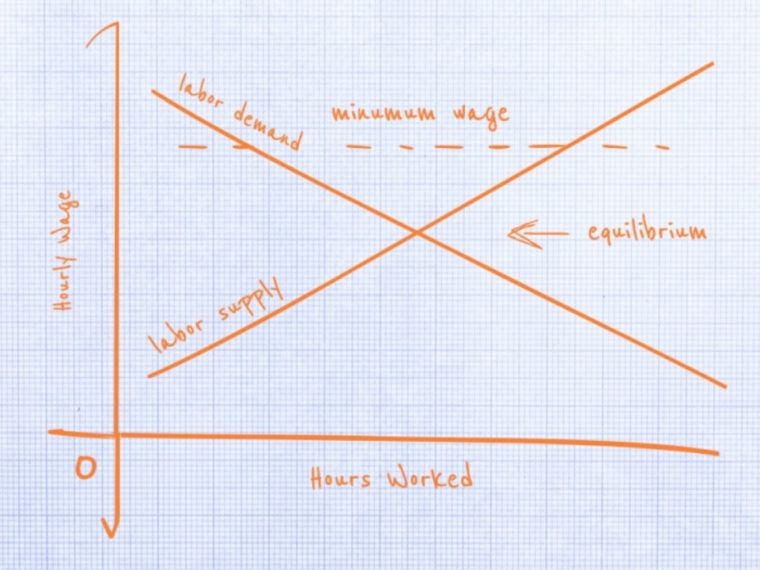Post-World War II Poland provides a unique setting to study mobility and success
Researchers have long speculated that people uprooted by violence or natural disasters are more likely to invest in education because it is a “mobile” asset they can take with them if forced to move again. Higher educational levels generally lead to better incomes and greater opportunities, creating a virtuous circle of prosperity that gets passed down generation after generation.
An understanding of what actually makes a migrant successful in his or her new surroundings is increasingly crucial, as more than 65 million people, forced from their homelands, are today being accepted and rejected by other countries based on a wide range of beliefs and biases.
The theory of forced migrants’ strongly favoring education has been notoriously difficult to prove because there are many factors that can impact the fate of people expelled from their homes. Were they poor farmers forced to flee with their crops in the ground? Or wealthy businesspeople with overseas bank accounts and suitcases filled with cash? Were the places they landed hostile or welcoming? When forced migrants settle in their new homes, they typically differ from locals in ethnicity, religion or cultural background — confounding factors that are hard to disentangle from the effects of forced displacement itself.
Opt In to the Review Monthly Email Update.
A group of academics from both sides of the Atlantic have gained insight by exploring a unique moment in history: the traumatic years after World War II when millions of people in Poland were forced to relocate, leaving behind their homes in the Eastern Borderlands (“Kresy”), which became part of the Soviet Union. Poles from Kresy were forced to relocate to the new Polish borders, which incorporated the Western Territories that had previously belonged to Germany.
The authors of the paper are University of Warwick’s Sascha O. Becker, Paris School of Economics’ Irena Grosfeld, UNSW Sydney’s Pauline Grosjean, UCLA Anderson’s Nico Voigtländer and Ekaterina Zhuravskaya, also of the Paris School of Economics.
By 1950, 2.1 million Poles had been forced to move from the Kresy region, with most resettling in the west where the departing Germans had left behind abundant land, housing and other key infrastructure. Kresy families were allowed to bring up to two tons of luggage.

In addition to the forced migrants, there was a large population of Poles from central Poland who voluntarily moved west, attracted by promises of prosperity from officials anxious to quickly repopulate the region. They joined a much smaller population of Poles who had lived in the Western Territories when they were part of Germany.
People forced to flee their homes usually end up in a much different environment, where their success can be impacted by factors as varied as geography, language or religious background.
But post-WWII Poland was largely ethnically and religiously homogenous, composed of ethnic Poles of Roman Catholic background whose major difference was their pre-WWII place of residence. In addition, forced migrants and voluntary migrants from other parts of Poland moved to the Western Territories over the same period of time, so their access to land and capital was similar.
This unusual confluence of history and geography provided the researchers with a unique setting to test their theories about forced migration. Researchers also benefited from a rich mix of historical and contemporary data that allowed them to control for potential bias and tease out the most statistically significant data.
Analyzing historical censuses and newly collected survey data, the researchers find that among Poles with similar background and education level prior to the war, those with a family history of forced migration were significantly better educated and economically successful decades later.
Concretely, the authors find that individuals whose ancestors were expelled from Kresy have on average one year more of schooling, relative to a mean of 11.93 years. The relationship between forced migration and education is even stronger in the upper education levels. Descendants of Kresy migrants are 12.7 percentage points more likely to finish secondary education (relative to a mean of 51 percent) and 9.9 percentage points more likely to graduate from college (relative to a mean of 21 percent).
The authors also find that among the Poles old enough to have finished secondary education before they were forced to leave Kresy, the level of education was very similar to those Poles who voluntarily moved or had grown up in the Western Territories. This suggests that the findings were not likely to be influenced by pre-existing educational differences or self-selection of more highly educated migrants.
They were also able to demonstrate that the higher education level of the Kresy migrants translated into better economic outcomes. The descendants of Kresy migrants are more likely to have white collar jobs, less likely to be unemployed and their incomes averaged 10 percent higher.
To tease out the “why” behind these findings, the authors examined the responses to questions about the importance of education and desire for material goods.
Again, the data suggest that among people with the same level of schooling, those with Kresy ancestors had stronger educational aspirations for their children, scoring 8.6 percentage points higher (relative to a mean of 61 percent).
These findings, combined with anecdotal evidence from the descendants of Poland’s Kresy region migrants, suggest the Poles forced to leave their homes were more uncertain about their future stability, leading them to value portable assets such as education. Magdalena Grzebalkowska, a granddaughter of Kresy migrants, explains in her book on Poland’s WWII relocation, “Unconsciously I inherited the fear of my ancestors-settlers that the place where I live is given to us just for a moment.” In that situation, she told the researchers, “It seems worth investing in yourself, getting more education.”
Descendants of Kresy migrants are also significantly less likely to rate “possession of material goods” as a “main condition for success in life.” To augment this finding, respondents were asked whether they possessed 20 different non-essential assets (such as vacation house, eBook, boat). In cases where they did not own something of that nature, they were asked if it was because of financial reasons. The finding? Descendants of Kresy migrants owned fewer assets than other Poles even if they could afford them, reinforcing the theory that people forced to migrate were more likely to invest in education over material goods.
Featured Faculty
-
Nico Voigtländer
Professor of Global Economics and Management
About the Research
Becker, S.O., Grosfeld, I., Grosjean, P., Voigtländer, N., & Zhuravskaya, E. (2018). Forced migration and human capital: Evidence from post-WWII population transfers.






